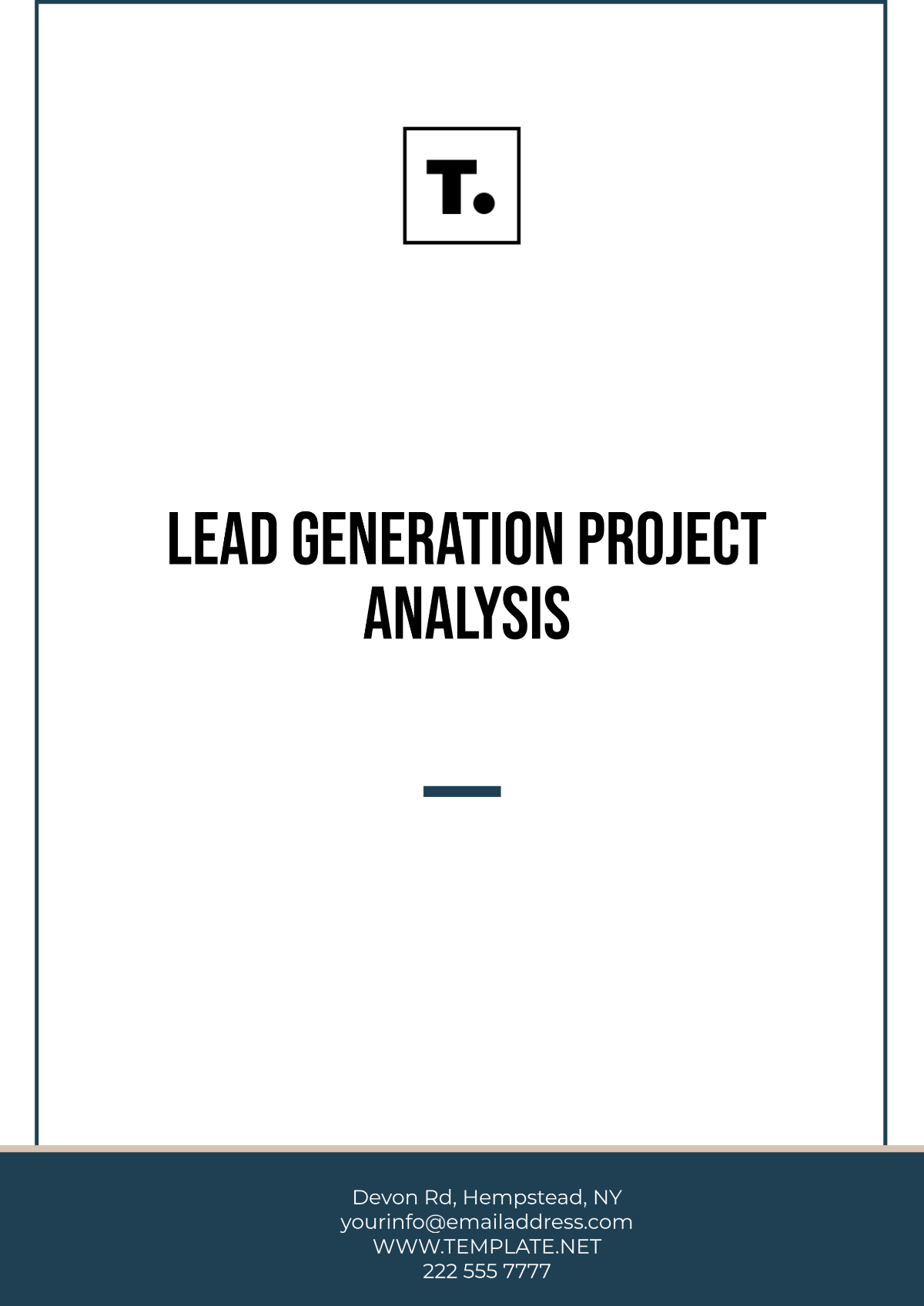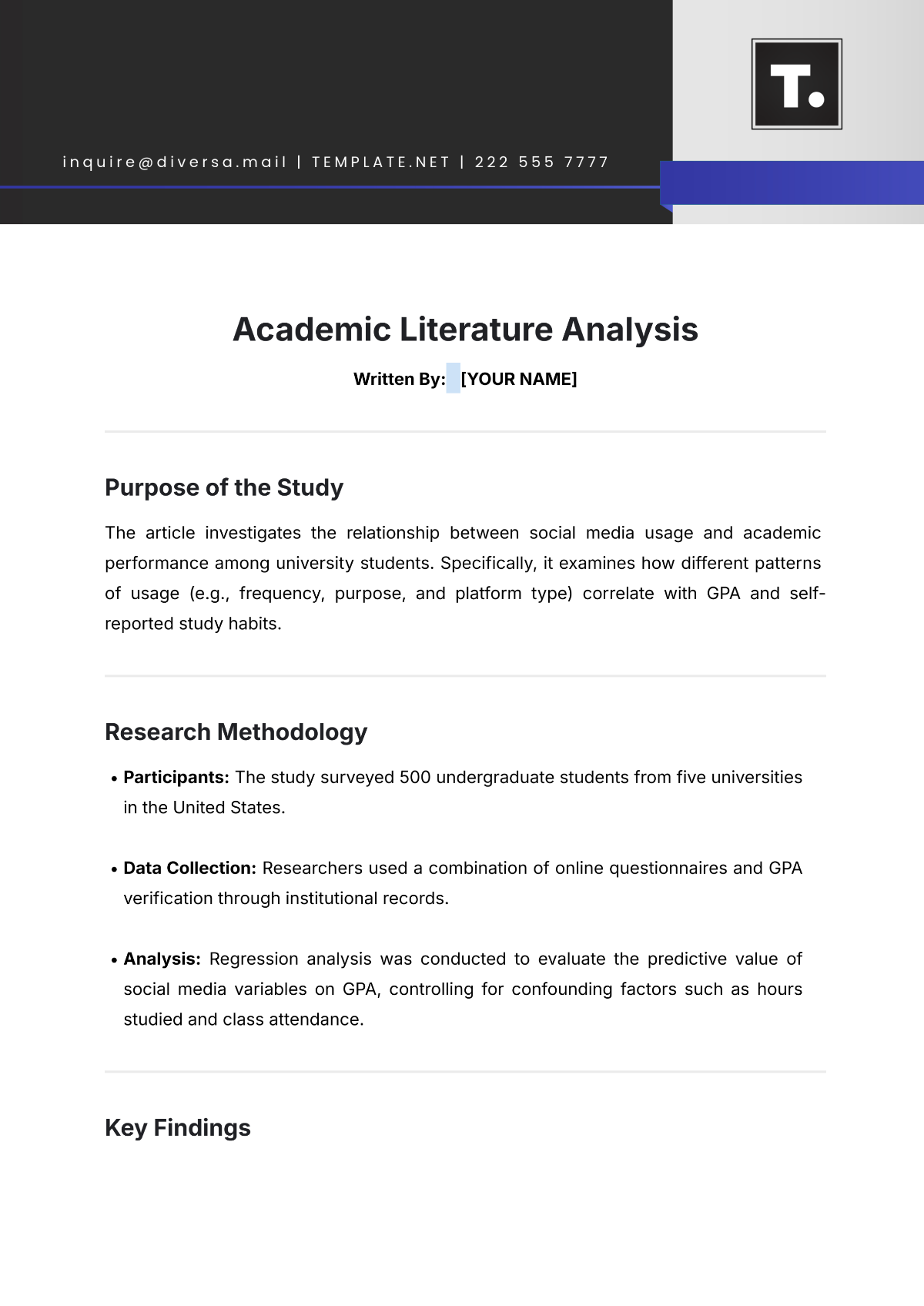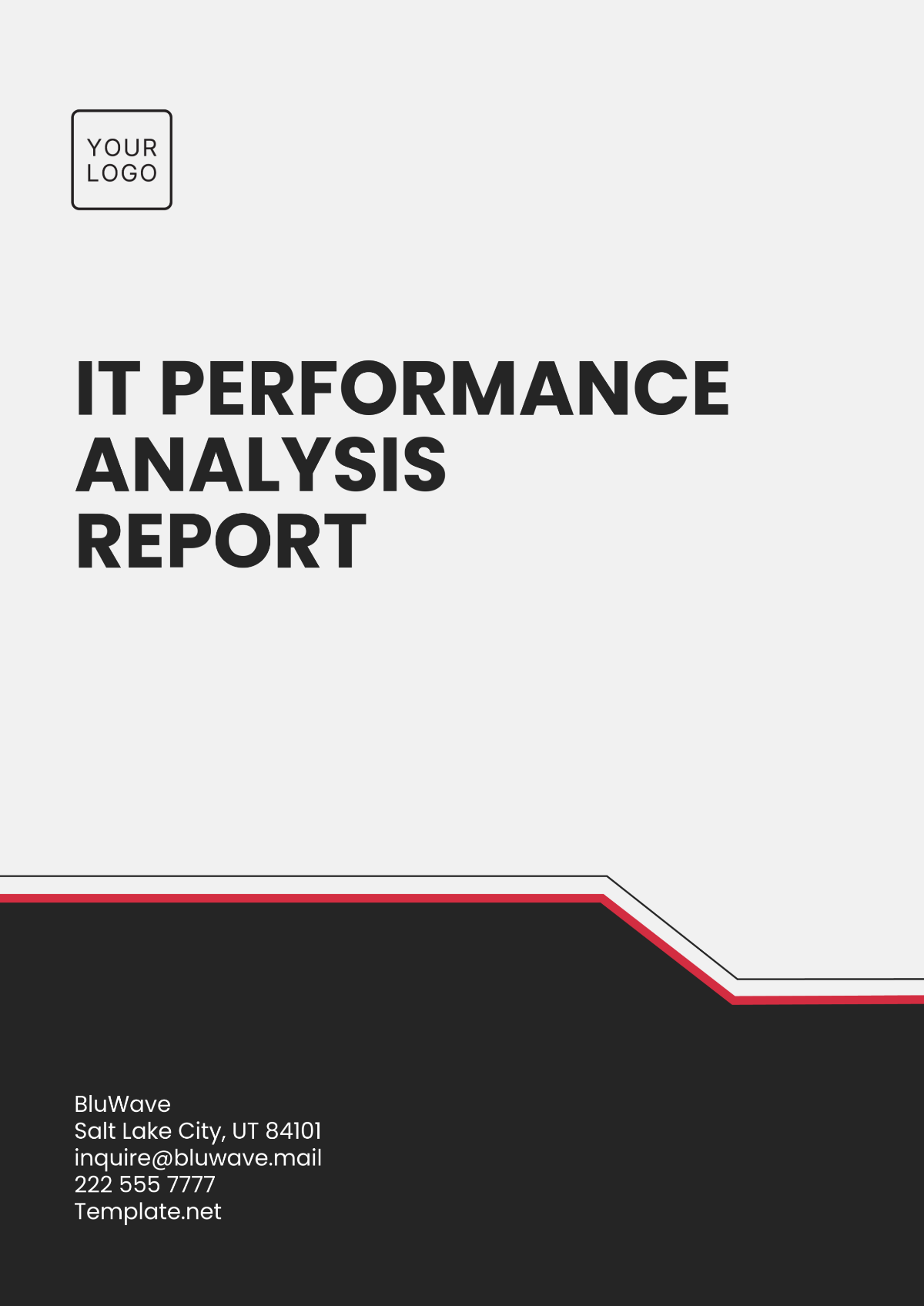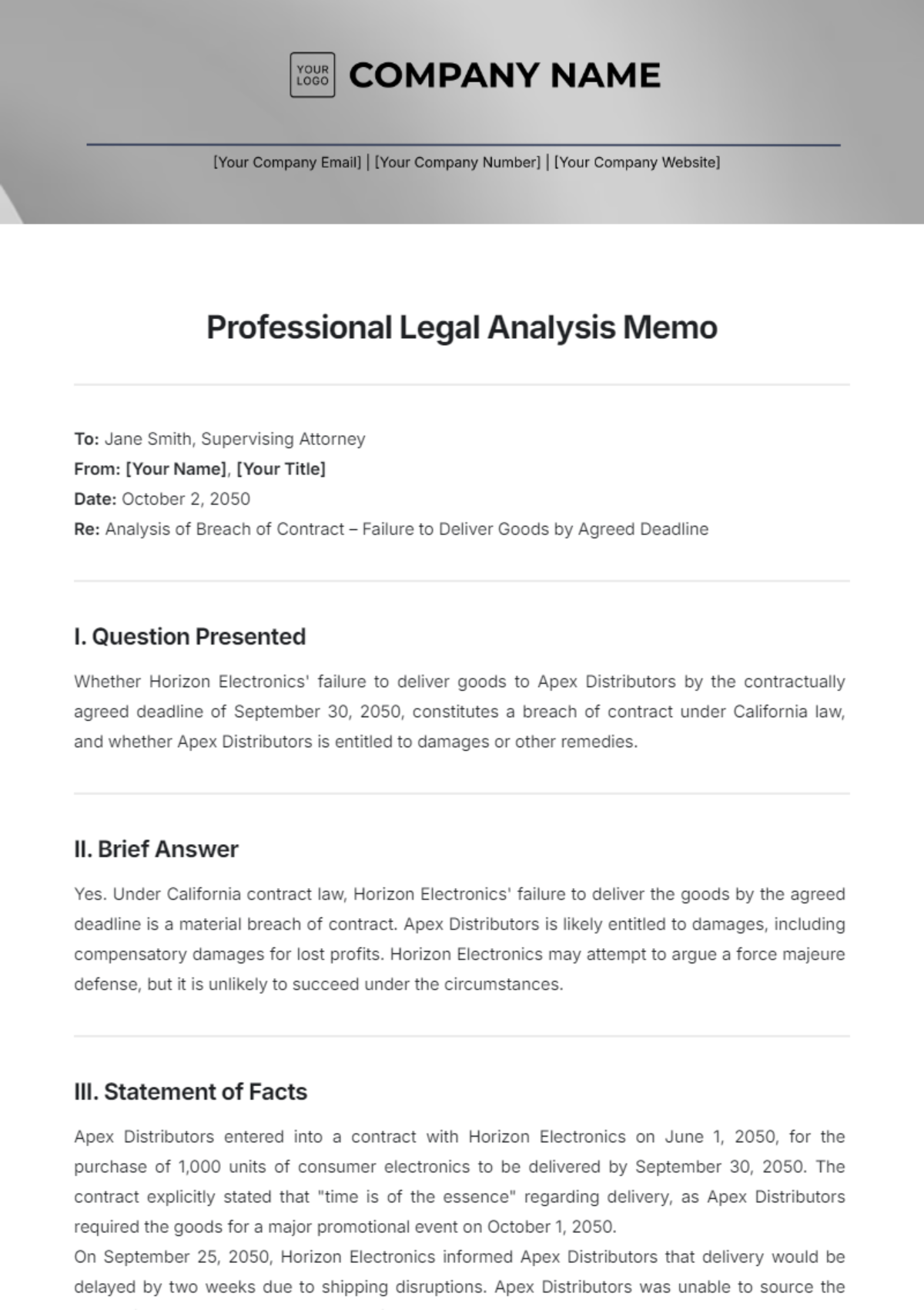School Data Analysis
I. Overview
The purpose of this data analysis is to comprehensively examine the various aspects of student and teacher performance at [Your Company Name] School. This analysis aims to identify trends, strengths, and areas needing improvement to enhance the overall educational experience. By meticulously analyzing data collected from various sources, this report seeks to provide actionable insights that will drive informed decision-making and strategic planning.
The key objectives of this analysis include evaluating student academic achievement, attendance patterns, and the effectiveness of extracurricular activities. Additionally, this report will assess teacher performance and the impact of professional development programs. Ultimately, the findings will inform recommendations to improve academic outcomes, attendance rates, and teacher efficacy, contributing to the school's continuous improvement efforts.
II. Data Collection
A. Sources of Data
Data for this analysis was collected from multiple sources to ensure a comprehensive understanding of the school's performance. The primary sources of data include:
Student Performance Records: These records provide detailed information on student grades across various subjects and grade levels. They help in understanding the academic progress and areas where students excel or struggle.
Attendance Records: Attendance data is crucial for analyzing patterns of absenteeism and its correlation with academic performance. It includes daily attendance logs and records of excused and unexcused absences.
Teacher Evaluations: Teacher performance evaluations offer insights into instructional effectiveness and areas for professional growth. These evaluations are based on classroom observations, student feedback, and administrative assessments.
Standardized Test Scores: Standardized testing results provide a benchmark for comparing the school’s performance with district, state, and national averages. These scores are essential for identifying trends and setting academic goals.
Extracurricular Activities Participation: Data on student involvement in extracurricular activities helps assess the impact of these programs on overall student development and academic performance.
B. Data Collection Methods
The data was collected using a combination of methods to ensure accuracy and reliability:
Surveys: Surveys were administered to students, teachers, and parents to gather qualitative data on various aspects of the school experience, including academic support, extracurricular involvement, and overall satisfaction.
Interviews: One-on-one interviews with teachers, administrators, and students provided deeper insights into specific issues and areas of interest highlighted by the survey data.
Administrative Records: Existing school records were reviewed to gather quantitative data on student performance, attendance, and teacher evaluations. These records were systematically organized and analyzed to ensure consistency and accuracy.
Observations: Classroom and extracurricular activity observations were conducted to gather real-time data on student engagement, instructional strategies, and program effectiveness.
III. Data Analysis Methodology
A. Data Cleaning
Before analyzing the data, it was essential to clean the dataset to ensure accuracy and reliability. The following steps were taken:
Handling Missing Data: Missing data points were addressed by using imputation techniques or by removing incomplete records when necessary. For instance, if a student’s attendance record was missing for a particular day, the average attendance rate for similar days was used as an estimate.
Removing Outliers: Outliers that could skew the analysis results were identified and removed. For example, if a student's performance score was significantly different from the rest of the class, it was examined for possible errors or exceptional circumstances.
Data Normalization: Data from different sources were normalized to ensure consistency. This involved converting various data formats into a uniform structure, such as standardizing grade scales or converting attendance data into percentages.
B. Statistical Tools and Techniques
Various statistical tools and techniques were employed to analyze the data effectively:
Descriptive Statistics: Descriptive statistics, including mean, median, and mode, were used to summarize the data. For instance, the average test scores for each subject were calculated to provide an overview of student performance.
Inferential Statistics: Inferential statistical methods, such as regression analysis and hypothesis testing, were used to identify correlations and causal relationships. For example, regression analysis was used to determine the impact of attendance on academic performance.
Data Visualization: Data visualization techniques, including charts, graphs, and histograms, were employed to present the data in an easily understandable format. These visualizations helped identify trends and patterns quickly.
IV. Student Performance Analysis
A. Academic Achievement
The academic achievement analysis focused on evaluating student performance across different subjects and grade levels. The following table presents the average grades for core subjects over the past three academic years:
Subject | [Years] | [Years] | [Years] |
|---|---|---|---|
English | 85 | 87 | 89 |
Mathematics | 78 | 82 | 80 |
Science | 80 | 84 | 83 |
History | 82 | 83 | 85 |
Physical Ed. | 88 | 90 | 92 |
The data reveals that there has been a consistent improvement in English and History performance, while Mathematics and Science have shown fluctuations. These trends highlight the need for targeted interventions in subjects with declining or inconsistent performance.
B. Attendance Analysis
Attendance data is crucial for understanding student engagement and its impact on academic performance. The table below shows the overall attendance rates for the past three years:
Academic Year | Attendance Rate (%) |
|---|---|
[20xx-20xx] | 92.5 |
91.0 | |
93.2 |
The attendance rates have remained relatively stable, with a slight improvement in the most recent year. Further analysis revealed that attendance rates vary significantly by grade level and demographic groups. For instance, middle school students had higher absenteeism rates compared to elementary and high school students. This variation suggests that specific grade levels may require more focused attendance improvement strategies.
C. Extracurricular Activities
Participation in extracurricular activities plays a vital role in holistic student development. The table below presents the participation rates in key extracurricular programs:
Activity | Participation Rate (%) |
|---|---|
Sports Teams | 40 |
Music Programs | 30 |
Art Clubs | 25 |
Academic Clubs | 35 |
Community Service | 20 |
The data indicates that sports teams and academic clubs have the highest participation rates, while community service programs have the lowest. Analysis showed a positive correlation between participation in extracurricular activities and academic performance, particularly for students involved in academic clubs and sports teams. This correlation underscores the importance of promoting diverse extracurricular opportunities to support student success.
V. Teacher Performance Analysis
A. Evaluation Scores
Teacher evaluations provide insights into instructional effectiveness and areas for professional growth. The table below summarizes the average evaluation scores for the past three years:
Year | Instructional Effectiveness | Classroom Management | Student Engagement | Overall Score |
|---|---|---|---|---|
[20xx-20xx] | 4.2 | 4.0 | 4.1 | 4.1 |
4.3 | 4.1 | 4.2 | 4.2 | |
4.1 | 4.0 | 4.1 | 4.1 |
The evaluation scores indicate a high level of instructional effectiveness and student engagement across the board. However, there is a slight dip in the scores for the most recent year, suggesting a need for a renewed focus on classroom management and instructional strategies. Detailed feedback from these evaluations highlighted the need for professional development in areas such as differentiated instruction and technology integration.
B. Professional Development
Professional development is essential for maintaining high teaching standards and supporting teacher growth. The table below provides an overview of professional development participation over the past three years:
Year | Total PD Hours | Average Hours per Teacher |
|---|---|---|
[20xx-20xx] | 500 | 20 |
520 | 21 | |
480 | 19 |
While there has been a consistent effort to provide professional development opportunities, the slight decline in total PD hours and average hours per teacher in the most recent year indicates a potential area for improvement. Survey feedback from teachers revealed a strong interest in workshops focused on inclusive education practices, classroom technology integration, and student mental health support. These insights will inform future professional development planning to better meet teacher needs and improve instructional quality.
VI. Identification of Key Issues and Areas for Improvement
A. Academic Challenges
The analysis revealed several academic challenges that need addressing to improve overall student performance at [Your Company Name] School. One significant challenge is the declining performance in Mathematics and Science, as evidenced by the following table, which shows average grades over the past three years:
Subject | [Years] | [Years] | [Years] |
|---|---|---|---|
Mathematics | 78 | 82 | 80 |
Science | 80 | 84 | 83 |
While there was an improvement in the [20xx-20xx] academic year, the subsequent decline in [20xx-20xx] indicates an inconsistency that needs to be addressed. Factors contributing to these fluctuations include changes in curriculum, teaching methods, and student engagement levels. To combat these challenges, it is crucial to implement targeted interventions, such as additional tutoring sessions, revised teaching strategies, and enhanced classroom resources.
B. Attendance Issues
Attendance is a critical factor influencing academic success, and the analysis identified several attendance-related issues. The table below shows the variation in attendance rates by grade level over the past year:
Grade Level | Attendance Rate (%) |
|---|---|
Elementary | 95.0 |
Middle | 89.0 |
High | 90.5 |
The lower attendance rates in middle and high school grades suggest a need for specific strategies to address absenteeism. Common reasons for absenteeism include health issues, family responsibilities, and lack of engagement. By developing comprehensive attendance improvement programs, such as early intervention for at-risk students, parent engagement initiatives, and motivational incentives, the school can work towards improving attendance rates and, consequently, academic performance.
C. Teacher Development Needs
Teacher evaluations and feedback indicate areas for professional development that are crucial for maintaining high teaching standards. The following table summarizes the primary areas identified for further training:
Professional Development Area | Percentage of Teachers Needing Training |
|---|---|
Inclusive Education Practices | 40% |
Technology Integration in Classroom | 35% |
Differentiated Instruction | 30% |
Student Mental Health Support | 25% |
These areas were identified based on teacher feedback, student performance data, and classroom observations. By investing in professional development workshops and training sessions focused on these key areas, [Your Company Name] School can enhance teacher effectiveness and student outcomes. Furthermore, creating a supportive environment for continuous learning and growth will contribute to overall school improvement.
VII. Recommendations and Action Plan
A. Strategies for Academic Improvement
To address the academic challenges identified, the following strategies are recommended:
Curriculum Enhancements: Revise the Mathematics and Science curriculum to ensure it aligns with current educational standards and best practices. Incorporate hands-on learning activities and real-world applications to increase student engagement and understanding.
Additional Support Programs: Establish tutoring programs and study groups for students struggling in Mathematics and Science. Provide professional development for teachers to implement differentiated instruction techniques tailored to individual student needs.
Performance Monitoring: Implement a robust system for monitoring student progress throughout the academic year. Utilize formative assessments to identify areas of improvement early and adjust instructional strategies accordingly.
B. Attendance Improvement Strategies
Improving attendance rates requires a multifaceted approach:
Incentive Programs: Introduce attendance incentive programs that reward students for consistent attendance. These could include recognition awards, certificates, and school-wide celebrations.
Parental Engagement: Strengthen communication with parents regarding the importance of regular attendance. Organize workshops and informational sessions to provide parents with strategies to support their children's attendance.
Early Intervention: Develop an early warning system to identify students at risk of chronic absenteeism. Implement targeted interventions, such as counseling and academic support, to address the underlying causes of absenteeism.
C. Professional Development
To address the identified teacher development needs, the following action plan is recommended:
Training Workshops: Organize professional development workshops focused on inclusive education practices, technology integration, differentiated instruction, and student mental health support. Ensure that these workshops are interactive and provide practical strategies for implementation in the classroom.
Mentoring and Support Systems: Establish a mentoring program where experienced teachers provide guidance and support to newer teachers. Encourage collaboration and sharing of best practices among staff to foster a culture of continuous improvement.
Ongoing Evaluation: Regularly assess the effectiveness of professional development programs through surveys and feedback from teachers. Adjust the programs based on this feedback to ensure they meet the evolving needs of the teaching staff.
VIII. Conclusion
The comprehensive analysis of student performance, attendance, extracurricular activities, and teacher evaluation data at [Your Company Name] School highlights several key areas of success and opportunities for improvement. The academic challenges in Mathematics and Science, attendance issues in middle and high school grades, and specific teacher development needs require targeted interventions and strategic planning.
By implementing the recommended strategies for curriculum enhancements, attendance improvement, and professional development, [Your Company Name] School can enhance the educational experience for all students and support teachers in their professional growth. Continuous monitoring and evaluation of these initiatives will ensure that the school remains responsive to the needs of its community and committed to achieving excellence in education.

















































